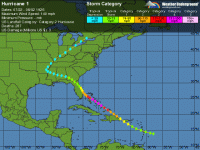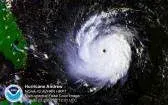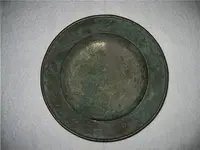Re: accounting for the 1715 fleet vessels by their own " offical records"
This was a news story about the wreck at Melbourne Beach:
A flintlock pistol, a sword and a cannon possibly used by ancient mariners are making history teacher Tom Funk and his fellow ocean explorers eager for next year's diving season to arrive.
They found the weapons in late August from a shipwreck about a half-mile off Melbourne Beach, north of the Sebastian Inlet, and plan to search the wreck more when diving conditions are at their best, usually about late May to October.
Funk and his partners hope the wreck is from the famed 1715 Spanish Silver Plate Fleet. The fleet of 11 galleons set sail from Havana in 1715 laden with jewels, gold and silver, but ran into a hurricane along Florida's east coast.
"Ten of the 11 ships were destroyed," said Funk, an archaeologist who teaches history at Satellite High School, in Satellite Beach. "Seven have more or less been found."
The shipwreck sites include spots near Fort Pierce and Sebastian, and the ships' high-value cargo gave the Treasure Coast its name. For the past decade, Funk and his partners have been surveying, exploring and researching what might be another of the treasure ships, in 43 feet of water off Melbourne Beach.
While exploring the wreck in late August, they found several artifacts that boosted their hopes.
"Our artifact collection is pretty interesting," Funk said. "We have enough artifacts, I think, to show what period they belong to."
There's the intact, silver-handled pistol and what appears to be a boarding sword, which has a curved blade and was known to be used by fighting mariners. The collection also includes some cannon balls, pewter plates and a stack of silver platters, which Funk said are beautifully embossed.
"They look like a big turkey platter," he said. "We're sending (the collection) to a conservation lab for more study."
In the meantime, Funk and his partners will work on renewing the salvaging permits they need from various state agencies, such as the state Division of Historical Resources. Permitted salvagers can end up owning items they find, but 20 percent of the value of found treasure goes to the state.
The dive site worked by Funk's team stretches diagonally for perhaps a mile. The team includes members of Heartland Treasure Quest, from Georgia and Florida; Amelia Research Co., of Amelia Island; and Florida Research and Recovery, a group of investors primarily from Georgia.
A principle of Heartland Treasure Quest is Sebastian resident Rex Stocker, who was a member of the Real Eight Co. The Real Eight Co. worked with the famed Mel Fisher's Treasure Salvors Inc. in the 1960s to recover millions of dollars worth of treasure from the 1715 Fleet shipwrecks.
Taffi Fisher Abt, Fisher's daughter and the director of Mel Fisher's Treasure Museum in Sebastian, said she's interested to hear more about the items found by Funk and his partners.
"It's quite possible this wreck is one of the 1715 Fleet," she said. "I have not seen any of these artifacts, and I haven't seen their log sheets, so I don't know for sure."
However, the Florida Bureau of Archaeological Research, in their Sept. 2009 newsletter, had this to say:
Heartland Treasure Quest, which has an exploration contract off Melbourne Beach (E-155), has reported finding a colonial shipwreck but the evidence does not present a strong case. A meeting with the Bureau in October and a revised report may help clarify any evidence for a potential site.
Then there was this article:
Hurricane unburies beach treasure, yields precious coins
The Orlando Sentinel, on Mon, Oct. 25, 2004
by RICH MCKAY
INDIALANTIC, Fla. - (KRT) - It is the stuff of pirate legends, but do not waste your breath asking Joel Ruth on what stretch of Florida's Treasure Coast he found his hoard of Spanish pieces of eight - waiting to be scratched out of the sand with bare fingers and toes.
Treasure hunters guard their secrets. (it was Melbourne Beach)
Especially, if like Ruth, they have just found about 180 near-mint silver coins worth more than $40,000.
To most Floridians, hurricane season is the time to board up windows and dread the worst. But to professional and amateur treasure seekers, it is the time to hit the beaches and hunt lost riches.
"It's why we're called the Treasure Coast," said Ruth, a bookish 52-year-old marine archaeologist (sic) with an African parrot named Euclid who has learned to squawk "Pieces o' eight."
It takes the big storms like Jeanne and Frances to rake several feet of sand off the beaches and dunes and expose gold, silver and gems sunk and scattered centuries ago.
Cheers, Tom








